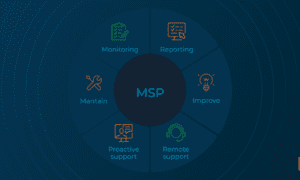If you’re applying for a technical role at Stripe, chances are you’ll face the famous Online Assessment, better known as the Stripe OA. For many candidates, this stage feels like the most stressful part of the hiring process. And honestly, that makes sense—Stripe is a big name in the fintech world, and their expectations are naturally high. Sitting in front of a timed test, where every second counts, can make even strong coders second-guess themselves.
What adds to the pressure is the uncertainty. You don’t know if you’ll get a string manipulation question, a graph traversal, or something that feels like a mini real-world payment simulation. Many candidates get nervous because of this unpredictability. In fact, I’ve heard people say that the hardest part isn’t the coding, but quieting the mind enough to think clearly when the timer is running.
The good part is, with the right preparation, the OA, will become less of a mystery and more of another hurdle that can be overcome with practice. In this article, we’ll go over what the Stripe OA is, the kinds of questions people usually face, and how to prepare effectively.
What Makes the Stripe OA Different
Most tech companies use coding tests, but Stripe’s OA is a bit unique. Instead of throwing random algorithm puzzles at you, their problems often feel closer to what Stripe engineers deal with in real life.
For instance, you might not just be asked to reverse a linked list for no reason. Instead, you could be asked to validate a set of payments, reject the invalid ones, and return only the valid transactions. That feels much closer to Stripe’s actual product.
This style of testing is why many candidates describe the OA as “practical but tricky.” You’re not just coding—you’re simulating scenarios that Stripe cares about.
Types of Questions People Face
The Stripe OA is usually divided into two main parts: coding challenges and scenario-based problems. Let’s break them down.
In the coding section, you can expect problems on arrays, strings, hash maps, graphs, or even dynamic programming. These are classic computer science topics but often framed in a payments-related way. For example, someone once shared they had to calculate the shortest route for a delivery system—something that connects directly to real-world optimization.
You may find the scenario-based questions more of logic puzzles than typing exercises. You may not only have to code, but also think about how to deal with a failed transaction. How would you minimize the chances of duplicate entries?
The key takeaway? The questions aren’t always about showing off advanced tricks. They’re about showing that you can think like an engineer who solves practical problems.
Preparing for the Stripe OA
Now let’s talk about preparation. Many people dive straight into LeetCode problems, which is fine, but it’s smarter to mix practice with strategy.
Here are some approaches that work best:
- Use platforms like LeetCode and HackerRank. Stripe OA questions are usually at the medium level.
- Practice identifying patterns instead of just memorizing. Understand sliding windows, two pointers, depth first search, and dynamic programming.
- Set time limits for practice sessions. Most candidates get 70–90 minutes for 2–3 problems, so you need speed as well as accuracy.
When I was preparing for a similar assessment, I noticed that solving questions under a strict timer made me calmer during the real test. It wasn’t about solving more problems—it was about solving them faster and cleaner.
Common Mistakes Candidates Make
This is one of those areas where bullet points make sense, so let’s list a few common mistakes:
- Overcomplicating solutions when a simple method works better.
- Ignoring edge cases, such as empty input or extremely large input.
- Forgetting about efficiency and writing brute-force code that crashes on big datasets.
- This may be caused by not testing code before submission.
Think of a question that asks you to remove duplicates from a list and immediately head to nested loops. A hash set could solve the problem in a fraction of the time. That’s the kind of thinking Stripe is looking for.
Insights Shared by Real Candidates
A lot of people who’ve taken the Stripe OA share their experiences online, and while the exact questions change, some patterns show up again and again.
Most people say they got two or three questions to solve in under 90 minutes. Some said they faced string manipulation questions, while others had to work with graphs. A few mentioned case studies about payment validation or error handling.
One candidate described their experience this way: “At first, the problem looked scary. But once I broke it down step by step, I realized it was basically a string parsing question I’d practiced before.” That’s a reminder that even Stripe’s complex-sounding problems are built on fundamentals.
Extra Tips to Keep in Mind
This is another heading where bullet points make sense, so here’s a short list of tips that can make a real difference:
- Take the first five minutes to read the problem carefully.
- Outline a quick plan before writing code—this saves time later.
- If you get stuck, skip and return later instead of wasting too much time.
- Use clear variable names and structure. Clean code often prevents silly mistakes.
I remember someone saying, “I thought nobody would see my code, so I didn’t care about readability. But messy code confused even me halfway through!” Don’t make that mistake. Clean, structured work is easier to debug.
Final Thoughts
This is meant to gauge how well you exhibit problem-solving approaches akin to those adopted by Stripe engineers during their work—clearly workabitely, and efficiently. Rather than viewing it as a stressful obstacle, consider it a practical assessment of your problem-solving capacity. By practicing coding patterns, writing simple and clean code, and mastering the art of time management, you will be way ahead of the many who over-engineer their approaches.
This is not a strange trap but a huge opportunity to showcase your engineering mentality. Each question is an opportunity to demonstrate your ability to grasp a problem, decompose it, and devise a solution iteratively.
The Stripe OA can be the differentiator for you. Rather than focusing on potential for failure, see it as an opportunity to showcase your problem-solving approach. This perspective on problem solving will not only help you pass the OA, but also impress Stripe.



































